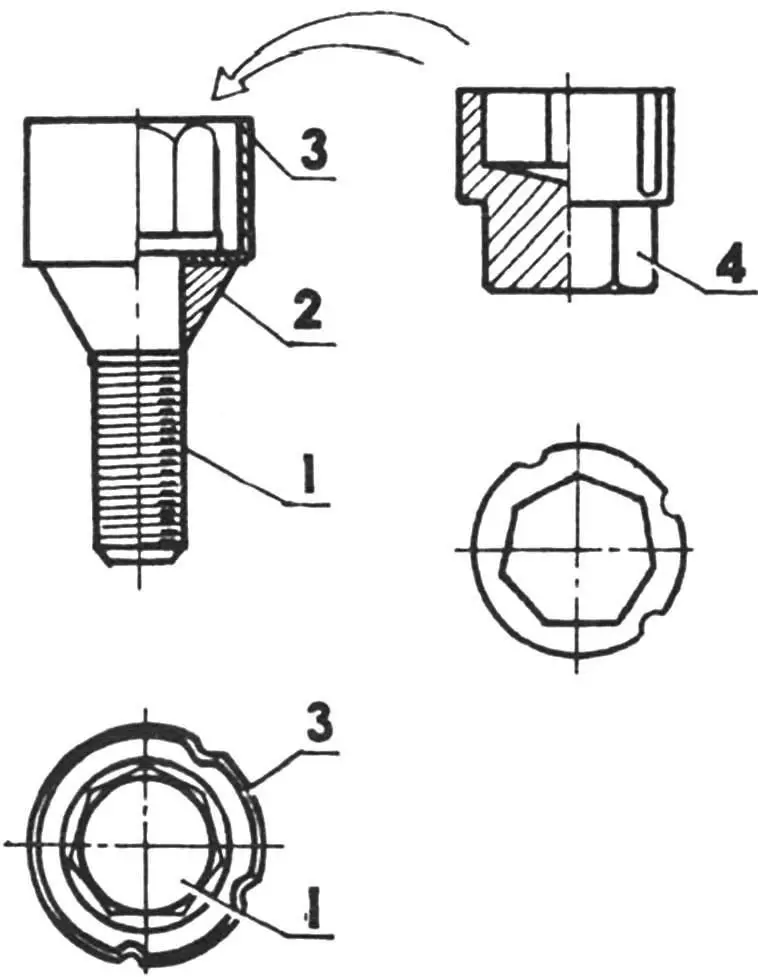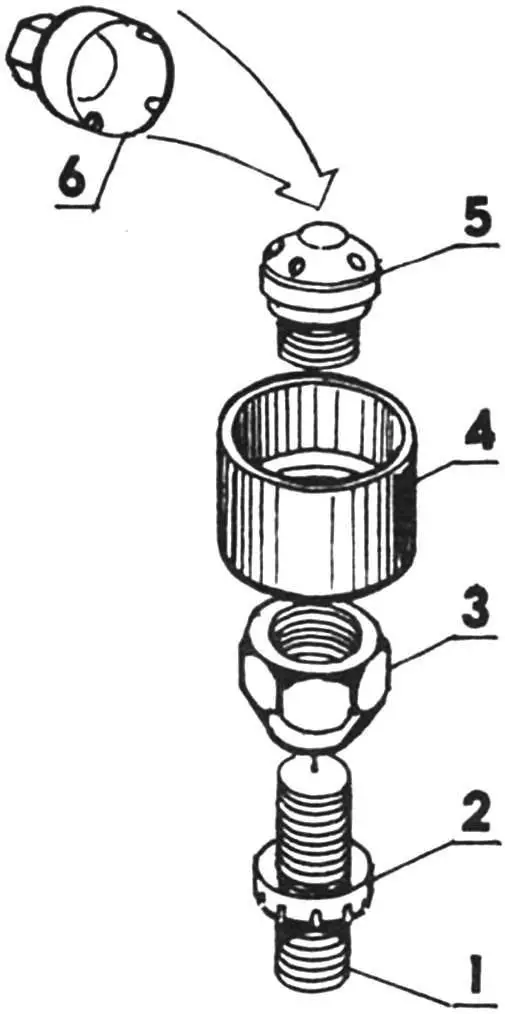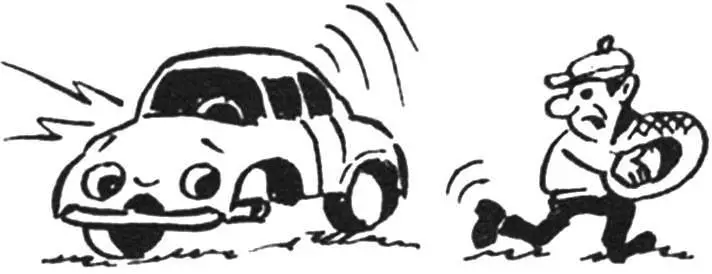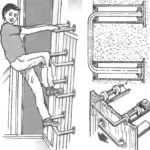Car enthusiasts and owners of agricultural machinery know first-hand how great the danger of suddenly ending up without wheels is. That is why they are ready to go to any lengths and spend money in search of patented “secrets” (fortunately, their number has long been in the hundreds), just to protect their cars from intruders. But… “they take off the shoes”!
No one has stolen the wheels from my Lada yet and I don’t think anyone will, since they are protected by homemade (the idea was borrowed from a number of foreign patent publications) “secrets” that have a fairly high degree of reliability.
They are based on modified bolts for a standard car wheel. Moreover, each fastening unit necessarily includes a freely rotating protective sleeve with a flange. Completely covering the bolt head or nut, it makes “unauthorized” dismantling virtually impossible (even if the intruder tries to use a “gas” key or other means of burglary).

1 — bolt; 2 — conical attachment; 3 — protective sleeve (with flange and projections); 4 — secret key (with recesses and head for standard wheel wrench).
In the first of the “secret” versions I implemented, the protective sleeve is installed under the bolt head. Its fit, as emphasized above, is loose. On the inner side surface of the sleeve, there are coding protrusions for the “secret” key, and at the base there is a flange that contacts the conical nozzle pressed onto the bolt. The latter fits tightly into the hole in the wheel disk with its outer surface.
The “secret” key is made with recesses, the shape, number and location of which correspond to the projections of the protective sleeve. It also has a hole – for the bolt head, and a standard head – for a standard wheel wrench.
To increase secrecy, it is advisable to make the number of bolt faces and, accordingly, the key holes non-standard.

1 — hairpin; 2 — shaped funnel-shaped ring; 3 — nut; 4 — protective sleeve (with flange); 5 — end switch; 6 — “secret” key (with pins and retaining rib).
The second version of the device protecting wheels from “unauthorized” dismantling is designed for a different type of fastener. The “secret” here includes a funnel-shaped shaped ring installed on the stud and tightened with a standard automatic nut. The latter has a protective sleeve with an internal flange. The end piece is screwed into the nut through the sleeve by 1-2 turns of thread. Its outer end is made with coding holes. In addition, the end piece has a cylindrical ledge, the end of which rests against the end of the nut.
The assembly and disassembly of such a “secret” is carried out with a key with pins. Their size, location and quantity correspond to the holes in the outer end of the switch. For ease of unscrewing the switch, the key is provided with a retaining rib.
The technical solutions I propose do not need further specification. And the parameters of the secret elements are individual for each and are not subject to disclosure.
V. ZHUK, Khmelnitsky, Ukraine



